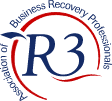Overdrawn Director’s Loan Account Pitfalls...
A Director’s loan arises when a Director receives money from a company of which they are a Director that isn’t either:
- a salary, dividend or expense repayment; or
- money previously paid into or loaned the company
In order to take advantage of the tax benefits of taking dividends versus a salary, whilst still receiving a regular income, it is common practice for Directors to run up loans during the financial year, which are subsequently ‘repaid’ by way of setting off dividends declared at the end of the financial year.
This practice generally makes good financial sense.
However, should the Company have inadequate distributable reserves to pay a dividend sufficient to write off the loan, problems can arise.
It is a fact of life that, just because your business isn’t performing as profitably as previously, it doesn’t mean you do not have to meet the same personal commitments such as mortgage payments, bills, house repairs etc. As a result, it can be the case where a Director feels they have no option but to continue drawing, despite there being little imminent prospect of a dividend to clear their debt.
This leaves the Director with the following options:
- Leave the loan overdrawn
- Write off the loan
- Declare a bonus
- Set up a ‘tax scheme’ to write off the loan
If an insolvency practitioner is appointed over a Company with an overdrawn Director’s loan (Option a ), it is their duty to try and realise this debt for the benefit of creditors, and repayment of the loan will be sought.
Should the loan have been reduced by the use of options b, c or d, the insolvency practitioner’s investigations are likely to highlight claims against the Director such as preference, misfeasance or transactions at an undervalue.
Should the worst happen and your business faces insolvency, you may be tempted to continue trading to avoid crystallising and thus having to repay this debt. This is potentially dangerous as in addition to the claims above, there is also the risk of a wrongful trading claim.
It should also be noted that (particularly following the introduction of RTI) HMR&C will be aware, not only of the existence of the loan, but also salaries paid, and will likely report this to the Insolvency Practitioner and may also pursue the Director for unpaid tax on any outstanding loans.
It is important that both Directors and their advisors understand the complications and potential pitfalls of an overdrawn loan account. Seeking professional advice as soon as they are aware of a would-be problem is the safest option.
[Written in August 2015]
For impartial, in-depth, one-to-one advice
contact us on 0161 438 8555 or
by email to info@jldllp.co.uk






